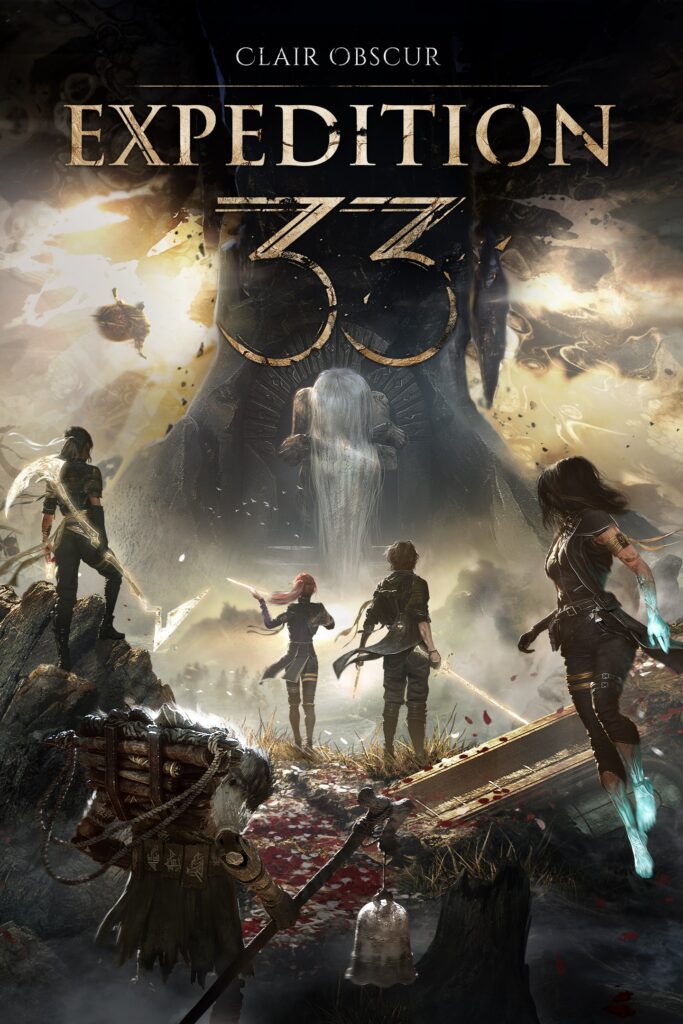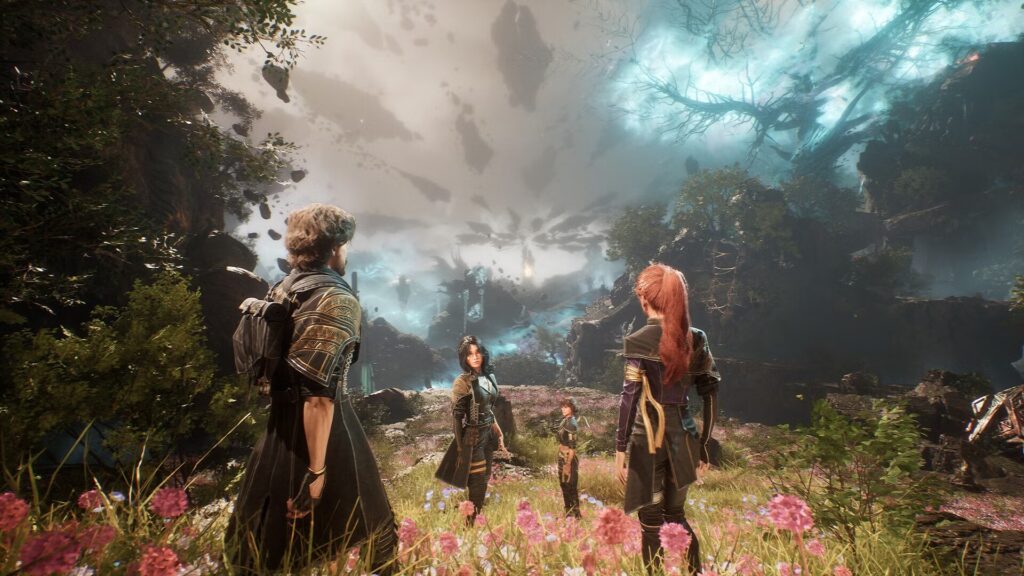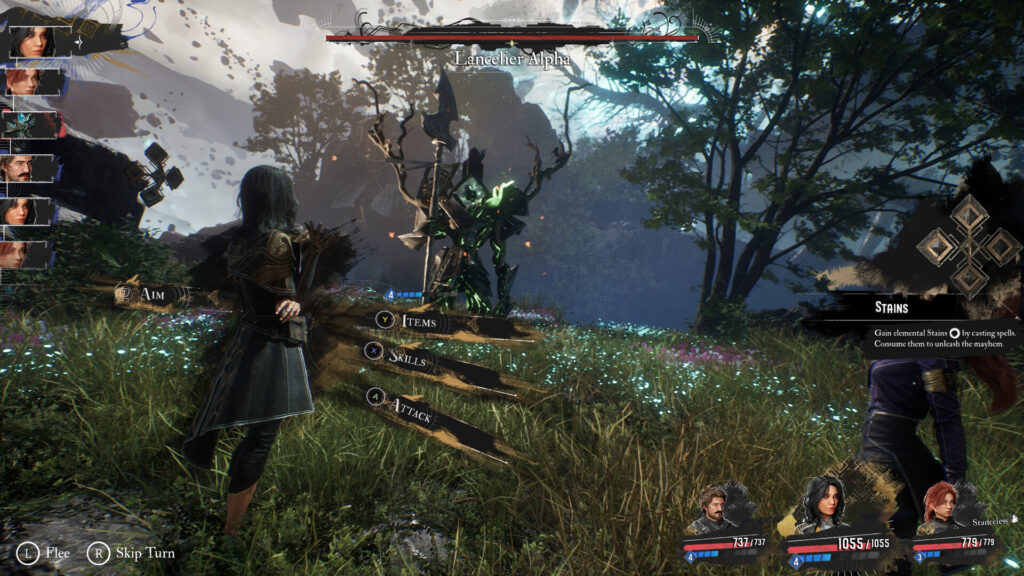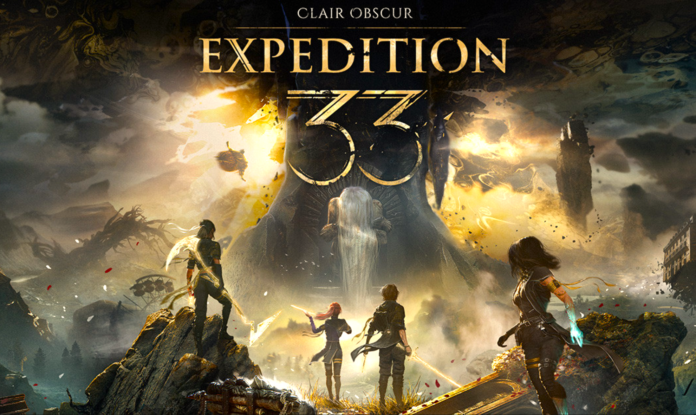Death comes for everyone, but in Clair Obscur: Expedition 33, it isn’t random. It’s marked, measured, and terrifyingly predictable. Developed by French studio Sandfall, this breathtaking RPG builds a world where extinction feels both intimate and overwhelming. With its blend of heartfelt storytelling, stunning visuals, and a truly fresh take on turn-based combat, Clair Obscur delivers an unforgettable experience about what it means to live when death is only a step away.

The story takes place in Lumière, the last remaining city on a shattered continent twisted by a mysterious disaster called the Fracture. Here, an ethereal figure known as the Paintress selects an age every year, and anyone who reaches it simply vanishes, crumbling into dust and red petals. As the number ticks down from 34 to 33, those marked for death see no choice but to fight back. Expedition 33—the desperate mission you join—is humanity’s final, slim hope at survival.
This premise hits deeply because it taps into universal truths about grief, fear, and hope. What makes Clair Obscur remarkable, though, is how human it feels. The cast of characters, from Sciel’s fierce optimism to Lune’s intellectual hunger, come alive through exceptional writing and top-tier performances from actors like Charlie Cox and Andy Serkis. Around the campfire, relationships form, stories unfold, and the heavy themes of mortality are balanced with humor, warmth, and real camaraderie.
Even though the setting is surreal—a twisted Paris of broken monuments and impossible landscapes—the emotions at the heart of Clair Obscur are grounded and real. This isn’t just a world teetering on the brink; it’s a world where people cling to art, music, love, and friendship as a way of resisting the inevitable.

The emotional storytelling would be powerful on its own, but Clair Obscur goes even further with its combat system. At first glance, it seems like traditional turn-based RPG fare: you have standard attacks, powerful skills, ranged shots, buffs, and healing items. But it quickly reveals itself as something much more reactive and kinetic. Nearly every action—whether casting a spell, striking an enemy, or defending against attacks—requires timed button presses, quick-time events, or rhythmic input. Instead of passively watching battles unfold, you’re an active participant, and the experience feels closer to an action game at times.
Mastering parries, dodging feints, and chaining attacks with perfect timing keeps the adrenaline pumping. Like Sekiro: Shadows Die Twice, the game rewards precision with devastating counterattacks and resource bonuses. Parrying attacks is satisfying on every level, from the explosive particle effects to the thundering sound design, making every battle an engaging test of skill rather than a menu-driven slog.
The strategic depth also shines through thanks to the game’s wonderfully diverse party. Gustave charges powerful lightning strikes, Maelle switches stances with her fencing skills to maximize damage, Lune manipulates elemental “Stains” to set up massive combo attacks, and Sciel builds momentum with prophetic debuffs. Each character plays differently, and when their skills are combined, the combat sings. Experimentation is encouraged, and pulling off complex team strategies is deeply rewarding.

Boss fights are another highlight, often demanding players solve small combat puzzles mid-battle. Some enemies grow shields you must destroy with ranged attacks before they can heal; others devour your party members, forcing dramatic one-on-one showdowns. Every encounter feels distinctive and memorable, and the stunning world design enhances these moments with dreamlike, often haunting settings.
Between battles, exploration paints a vivid picture of a broken world. While the paths you travel are relatively linear, each environment is a surreal masterpiece: underwater coral reefs you walk through on land, sprawling forests made of glass and light, theaters swallowed by sand. The overworld, with its nostalgic isometric view, ties everything together, inviting exploration of hidden areas and brutal optional bosses. Though side objectives can sometimes be easy to lose track of, and a few missing quality-of-life features (like weapon comparisons in shops) are noticeable, these are small blemishes on an otherwise striking canvas.
The music deserves special mention, too. A gorgeous blend of wistful piano, haunting French melodies, and rousing orchestral bursts, the soundtrack feels perfectly attuned to every emotional beat, from quiet grief to explosive triumph.

Considering Sandfall’s modest size, what they’ve achieved here is remarkable. Clair Obscur: Expedition 33 doesn’t just borrow from RPG history—it reimagines it with boldness and heart. By combining precise, action-heavy mechanics with layered storytelling about loss, memory, and survival, the game creates a rare kind of magic: a narrative-driven RPG that challenges you both emotionally and physically.
In the end, Clair Obscur reminds us that while death is inevitable, what matters is how we face it—and who we face it with. It’s a beautiful, thrilling journey into the heart of what it means to be human, making it one of the year’s most essential games. Minor flaws aside, this is a masterpiece that players will be thinking about long after the final battle is won.

